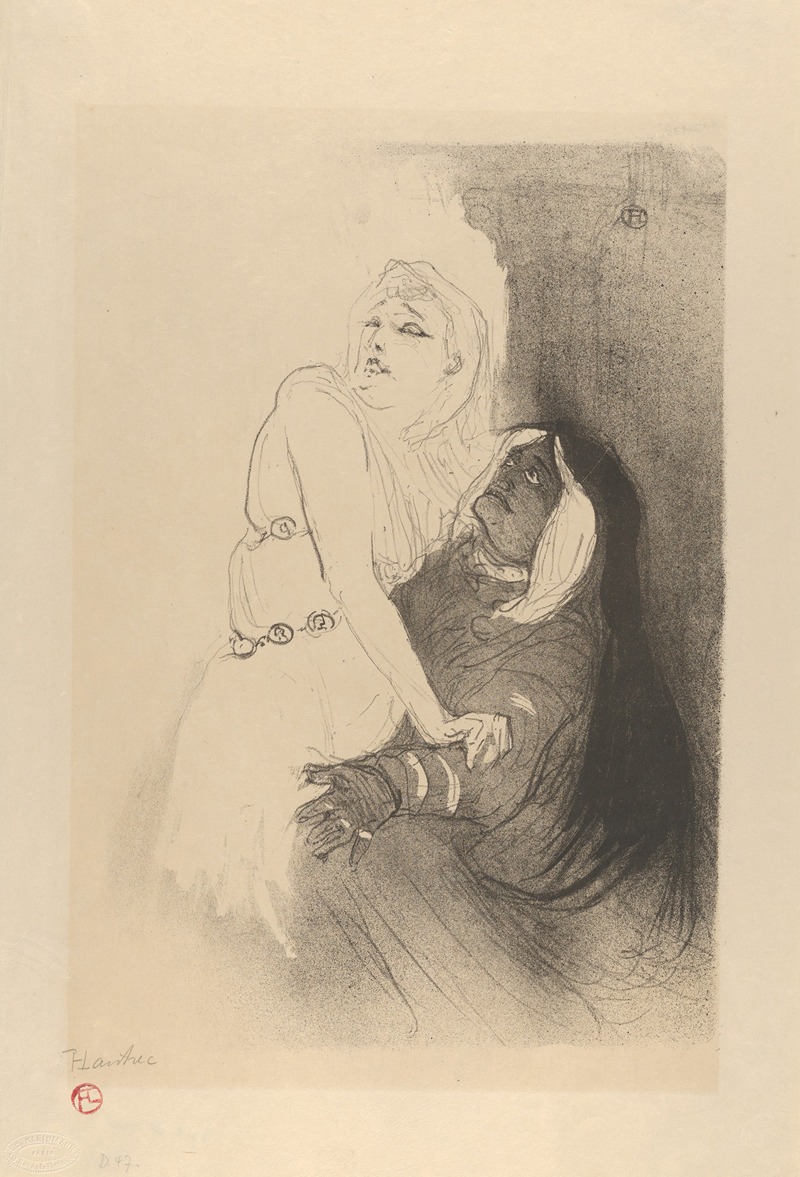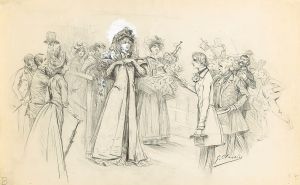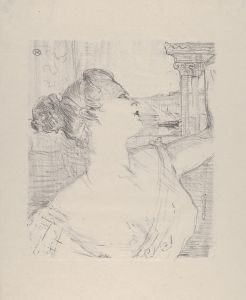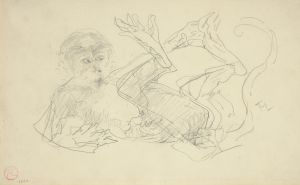
At the Théâtre de la Renaissance; Sarah Bernhardt in Phèdre.
A hand-painted replica of Henri de Toulouse-Lautrec’s masterpiece At the Théâtre de la Renaissance; Sarah Bernhardt in Phèdre., meticulously crafted by professional artists to capture the true essence of the original. Each piece is created with museum-quality canvas and rare mineral pigments, carefully painted by experienced artists with delicate brushstrokes and rich, layered colors to perfectly recreate the texture of the original artwork. Unlike machine-printed reproductions, this hand-painted version brings the painting to life, infused with the artist’s emotions and skill in every stroke. Whether for personal collection or home decoration, it instantly elevates the artistic atmosphere of any space.
Henri de Toulouse-Lautrec, a prominent French painter and printmaker, is celebrated for his vivid portrayals of Parisian nightlife in the late 19th century. One of his notable works, "At the Théâtre de la Renaissance; Sarah Bernhardt in Phèdre," captures the essence of the theatrical world and its iconic figures. This painting is a testament to Toulouse-Lautrec's ability to encapsulate the spirit of the era and the personalities that defined it.
The painting features Sarah Bernhardt, one of the most renowned actresses of her time, in the role of Phèdre. Bernhardt was a legendary figure in the world of theater, known for her dramatic presence and powerful performances. Her portrayal of Phèdre, a character from the classical tragedy by Jean Racine, was highly acclaimed and contributed to her status as a leading actress of the period. The Théâtre de la Renaissance, where this performance took place, was an important venue in Paris, known for hosting innovative and influential productions.
Toulouse-Lautrec's depiction of Bernhardt is notable for its attention to detail and the emotional intensity it conveys. The artist was known for his keen observation skills and his ability to capture the nuances of his subjects' expressions and gestures. In this painting, Bernhardt is portrayed with a dramatic flair that reflects her theatrical persona. The use of color and composition highlights her presence on stage, drawing the viewer's attention to her commanding performance.
The painting is also significant for its reflection of Toulouse-Lautrec's style and technique. He was influenced by the Impressionists and Post-Impressionists, and his work often features bold colors, dynamic compositions, and a focus on capturing movement and emotion. In "At the Théâtre de la Renaissance; Sarah Bernhardt in Phèdre," these elements come together to create a vivid and engaging portrayal of a theatrical moment.
Toulouse-Lautrec's connection to the theater world was deep and personal. He was a frequent visitor to theaters and cabarets in Paris, where he found inspiration for many of his works. His paintings and posters often featured performers, dancers, and other figures from the entertainment industry, capturing the vibrancy and energy of the Parisian nightlife. This painting is a part of that larger body of work, showcasing his fascination with the theater and its stars.
The painting not only highlights Toulouse-Lautrec's artistic skills but also serves as a historical document of the cultural scene in Paris during the late 19th century. It provides insight into the world of theater and the figures who shaped it, offering a glimpse into the past through the eyes of one of its most talented observers.
Overall, "At the Théâtre de la Renaissance; Sarah Bernhardt in Phèdre" is a remarkable example of Toulouse-Lautrec's work, capturing the essence of a theatrical icon and the vibrant world she inhabited. Through his art, Toulouse-Lautrec has left a lasting legacy that continues to be appreciated for its artistic merit and historical significance.

















